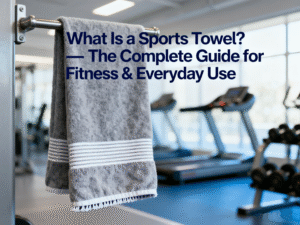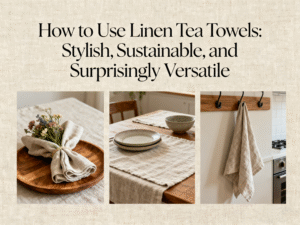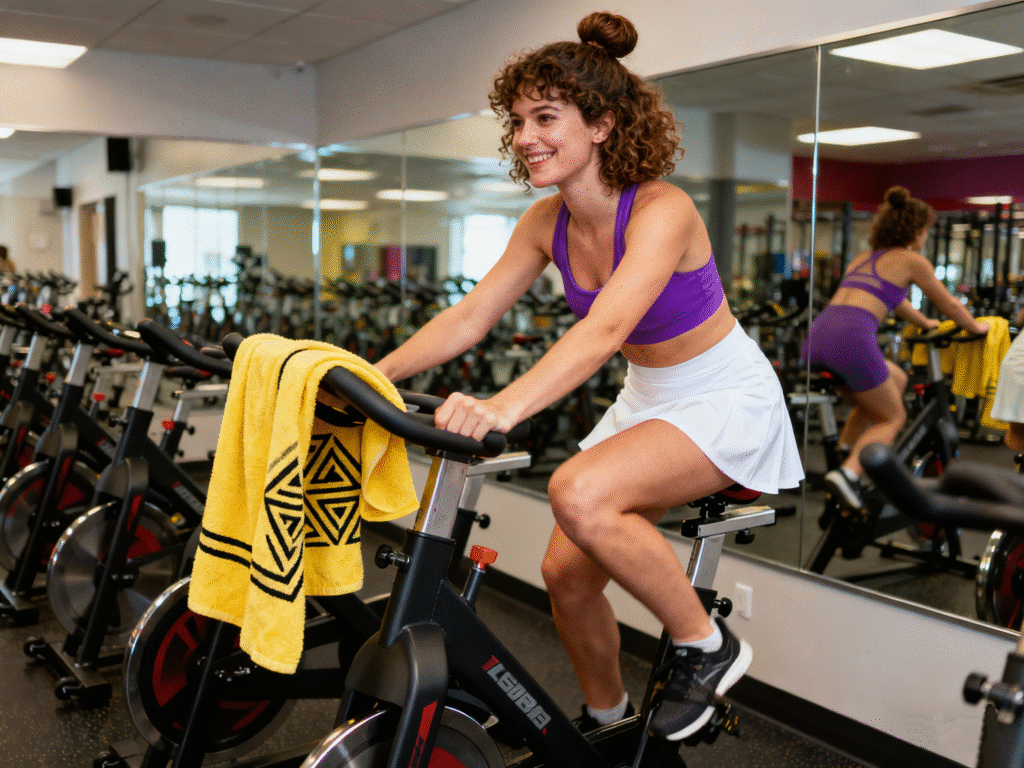
Use a personal sweat towel to wipe your skin and equipment, never share it, wash it after every workout, choose a quick-dry material (microfiber for portability, cotton for plush feel), and replace towels when they lose absorbency or smell.
What Is The Purpose Of a Sweat Towel in the Gym and Sports?
A sweat towel is a simple tool with a surprisingly big job: catch sweat, protect you and the equipment, and act like a quiet little ambassador of gym civility. Think of it as a personal napkin, a grip aid, and a tiny public-health officer rolled into one.
Sweat Towels for Hygiene and Bacteria Prevention
Wiping sweat limits the wet, warm environment that lets microbes thrive — the very conditions gyms unintentionally love. Note: sensational headlines about gym equipment having hundreds of times more bacteria than toilet seats trace back to small-sample reports and should be taken with a grain of protective towel-salt (the underlying study wasn’t a large, peer-reviewed lab project). Read that stat with caution — the point stands: shared gym surfaces can carry lots of microbes, so personal hygiene matters.
Protecting Gym Equipment and Workout Mats from Sweat
Sweat contains salts and oils that, over time, can leave residues on machines and cause slippery surfaces or long-term wear. Place a towel between you and shared surfaces to keep benches, pads, and mats cleaner for everyone.
Comfort, Grip and Better Workout Performance
Sweat reduces friction — not the good kind. A clean towel keeps your hands, face, and equipment drier so you can grip a bar, stay in pose, or sprint without slipping and cussing.
Gym Etiquette — Respecting Others by Using a Sweat Towel
Draping a towel over a machine says (wordlessly): “I care.” Wiping after yourself avoids the awkward confrontation of Two People, One Sweat Stain, and No One Wants That.
Selecting The Ideal Sweat Towel: Buying Guide for Gym-Goers & Athletes
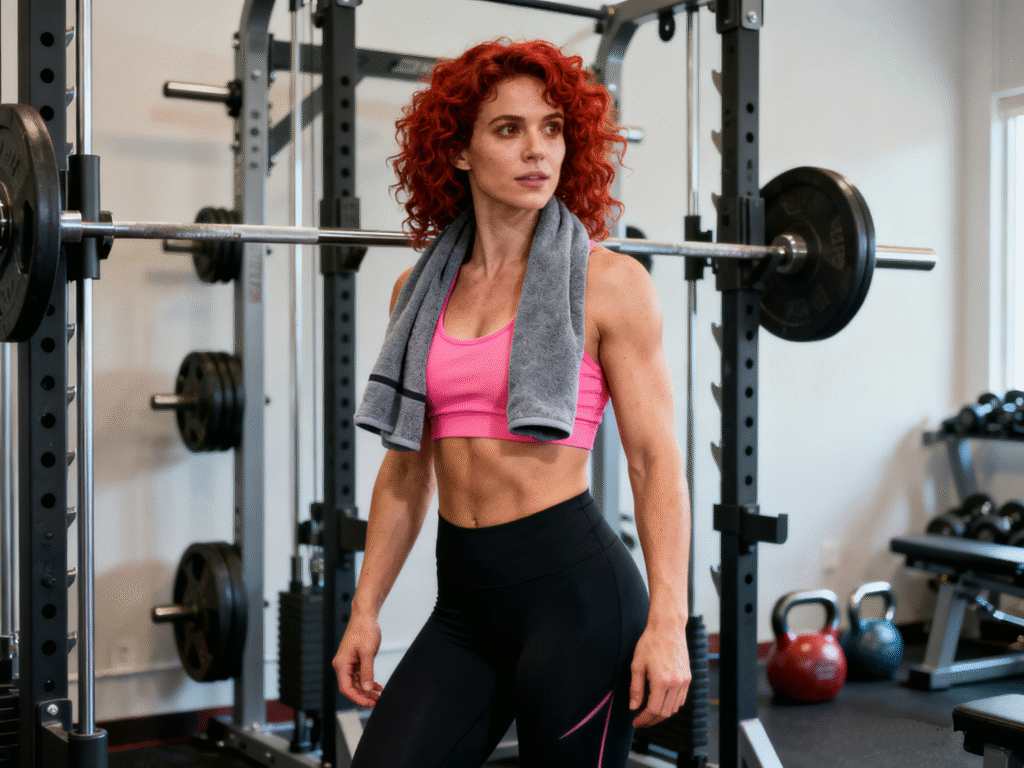
Choosing a towel is like choosing a gym buddy: personality (color), performance (material), and reliability (durability) matter.
Best Materials for Sweat Towels (Cotton vs. Microfiber vs. Bamboo)
| Material | Pros | Cons | Best For |
|---|---|---|---|
| Cotton | Soft, absorbent | Dries slowly | Home & casual gym use |
| Microfiber | Quick-dry, compact | Less plush feel | Frequent gym-goers, travelers |
| Bamboo | Sustainable, antibacterial | Pricier | Eco-conscious buyers |
- Microfiber — ultra-light, super quick-drying, compact; excellent for travel and sweaty workouts. Microfiber also performs very well at removing liquid and soil from surfaces due to its fine fibers.
- Cotton — soft, plush, absorbent; feels luxurious but takes longer to dry. Great for shower towels or home use.
- Bamboo / Organic Blends — softer than cotton, naturally antibacterial sometimes marketed as eco-friendly; pricier.
Quick note on hygiene: studies about whether microfiber or cotton “harbors more bacteria” are nuanced — microfiber is excellent for cleaning surfaces and can remove microbes effectively, but different laundering and reuse practices change outcomes. In other words: pick the right material, but wash it properly.
Sweat Towel Sizes for Gym, Yoga, Running and Sports
- Small / Hand Towel (30×30–40×40 cm): cardio machines, cycling.
- Medium (40×80–50×100 cm): most gym users — portable and covers enough for benches.
- Large / Yoga Mat Cover (60×120 cm+): hot yoga, mat protection, or shower use.
Lightweight, Quick-Dry & Portable Sweat Towels
If you commute, travel, or take long cardio sessions, prioritize microfiber quick-dry towels — they collapse into tiny bundles and hang dry quickly.
Durable Gym Towels with Strong Stitching & Long Lifespan
Look for reinforced hems, dense weave (not too thin), and manufacturer wash-cycle claims. Durable stitching prevents fraying after dozens (or hundreds) of washes.
Eco-Friendly and Sustainable Sweat Towel Options
Bamboo and organic cotton are popular; also consider towels that advertise low-impact dyeing and long life — longer life = fewer replacements = lower overall footprint.
Sweat Towel Color Psychology and Fitness Style Trends
- White / Light neutrals: spa, cleanliness vibe — but shows stains.
- Dark colors: practical; hide stains and look rugged.
- Bright / energetic colors: motivational for group classes and personal branding.
- Muted / earth tones: home-friendly, lifestyle-oriented gyms.
Sport-Specific Sweat Towels (CrossFit, Yoga, Cycling, Running, Team Sports)
- CrossFit / HIIT: compact, high-absorbency microfiber — must survive heavy sweat and toss-in washes.
- Cycling / Endurance Running: ultra-light microfiber that dries fast mid-ride or between sessions.
- Yoga / Pilates / Hot Yoga: large, grippy towel (often with a rubberized or silicone dot backing) to prevent sliding on mats.
- Team Sports / Locker Room: robust cotton or cotton-blend towels in multi-packs for frequent communal use.
- Outdoor / Adventure Fitness: antimicrobial-treated, quick-dry towels that compress into small sacks.
Performance Testing & Benchmarks for the Best Sweat Towels
Buyers want numbers. Here’s a practical test suite you can use (or look for in manufacturer specs):
Key metrics to compare
- Absorbency — measure: mL water absorbed per gram of towel. Good microfiber towels often absorb multiple times their weight (microfiber can absorb up to ~7–8× its weight in lab contexts).
- Drying time — measure: minutes to fully dry under a fan or outside (thin microfiber: tens of minutes; thick cotton: hours).
- Durability (wash cycles) — measure: manufacturer’s cycles to visible wear; user test by counting cycles until fraying or absorbency loss.
- Odor resistance / antimicrobial performance — measure: presence of persistent odors or growth after a set time in a damp bag (lab-rated products may show bacterial-growth tests).
- Weight & packability — measure: grams and packed volume for travel.
Buyer’s quick benchmarks (practical):
- Absorbency: reliable towels absorb multiple times their own weight.
- Drying: “quick-dry” should dry substantially faster than plush cotton; test in your climate.
- Durability: a good sports towel should survive 50–200 washes before serious decline — more if it’s high-quality microfiber or well-constructed cotton.
3 Benefits of Using a Sweat Towel During Workouts
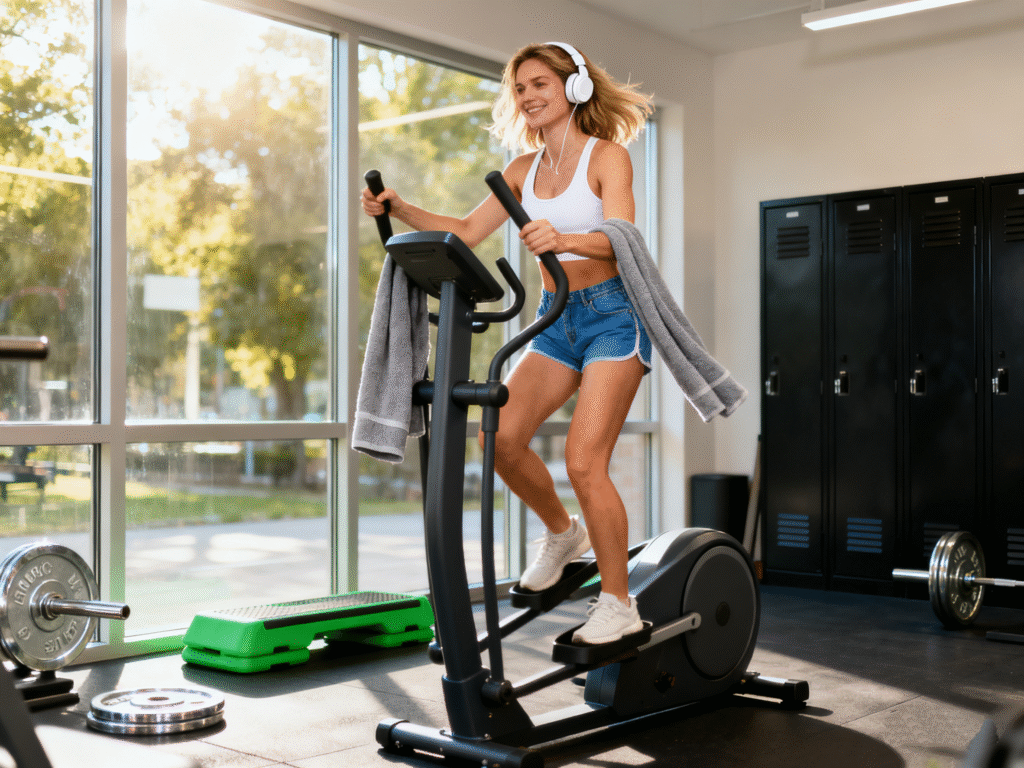
Reducing Germs and Bacteria in the Gym
Wiping sweat off yourself and equipment reduces the wet, salty film where bacteria and fungi like to hang out. While the specific “how many times more bacteria” headlines are often based on small studies, the practical take-home is simple: fewer wet surfaces = fewer microbes.
Preventing Slips, Accidents and Sweat-Related Injuries
A towel under your hands or feet during pressing, planks, or yoga can be the difference between a solid rep and an unexpected slip-and-flail. Safer workouts = more gains and fewer bruised egos.
Protecting Skin and Workout Clothing from Sweat Damage
Sweat left to pool on skin and clothing can irritate the skin, worsen acne, and make gear smell awful. A towel is a small barrier that saves complexions and wardrobes.
Why You Should Never Share or Reuse Your Workout Towel
Sharing Sweat Towels Spreads Germs and Infections
Towels carry whatever’s on your skin: bacteria, salt, and sometimes nastier things. Sharing a towel with someone else is basically swapping damp ecosystems — not recommended unless you enjoy gross-out stories.
Risks of Reusing Sweat Towels Without Washing
A damp towel in a closed gym bag is a microbial paradise. Odors are the first sign; skin infections like folliculitis or fungal flares can follow in sensitive people.
The Golden Rule: One Workout, One Towel
Short, punchy, and perfect for a featured snippet: “One workout — one towel. Wash it after use.” Dermatologists and hygiene experts often recommend washing towels frequently, especially those used during heavy sweating.
How Often Should You Wash or Replace a Sweat Towel?
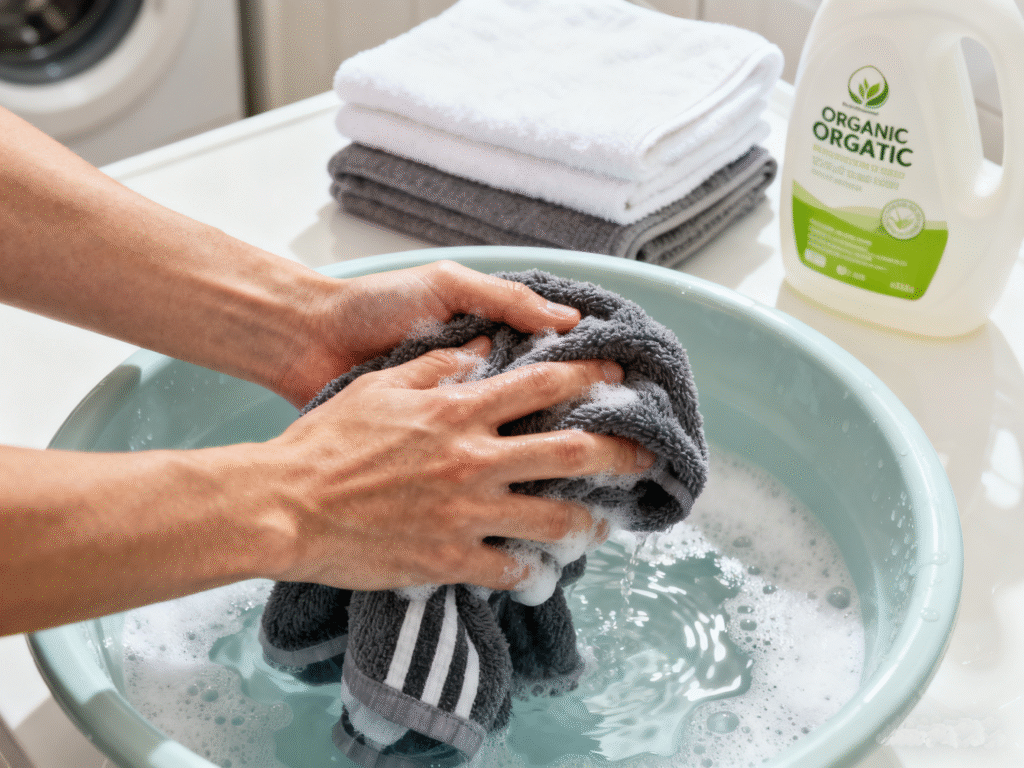
Washing Your Gym Towel After Every Workout
Best practice: wash after every workout, especially when you sweat heavily, attend hot sessions, or use shared equipment. This minimizes odor and microbial buildup. Practical reality: for light sweat sessions some use every 2–3 times — but only if the towel dries completely between uses. Experts recommend frequent washing for gym towels.
Replacement Timeline — How Long Do Sweat Towels Last?
Replace towels when you notice: persistent odor after washing, thinning or loss of absorbency, frayed edges, or visible staining that won’t budge. As a rough guide, many users replace frequently used sports towels every 6–12 months depending on material and care.
Factors That Shorten or Extend Sweat Towel Lifespan
- Washing temperature and detergent choice
- Use of fabric softener (reduces absorbency)
- How quickly the towel dries between uses
- Frequency and intensity of workouts
Tips to Make Your Sweat Towel Last Longer
Best Washing Techniques for Sweat Towels
- Wash towels with detergent (hot water if fabrics and labels allow) and avoid overloading the machine. CDC guidance on laundry stresses proper laundering practices and complete drying.
- Avoid fabric softener — it coats fibers and reduces absorbency.
- Use gentle detergents for specialty fabrics (bamboo, treated microfibers).
Drying and Storage Tips to Prevent Odor and Mildew
- Dry fully in a dryer or in a sunny, airy spot.
- Don’t store damp towels in closed gym bags.
- If traveling, use breathable pouches; avoid plastic bags for used towels.
Rotating Towels to Extend Their Longevity
Have 2–3 towels on rotation — keeps life easier (and each towel gets more time to dry fully between uses).
Common Sweat Towel Care Mistakes to Avoid
- Leaving damp towels in your gym bag overnight.
- Using bleach constantly (breaks down fibers).
- Applying fabric softener to performance towels.
Myth-Busting: Common Misconceptions About Sweat Towels
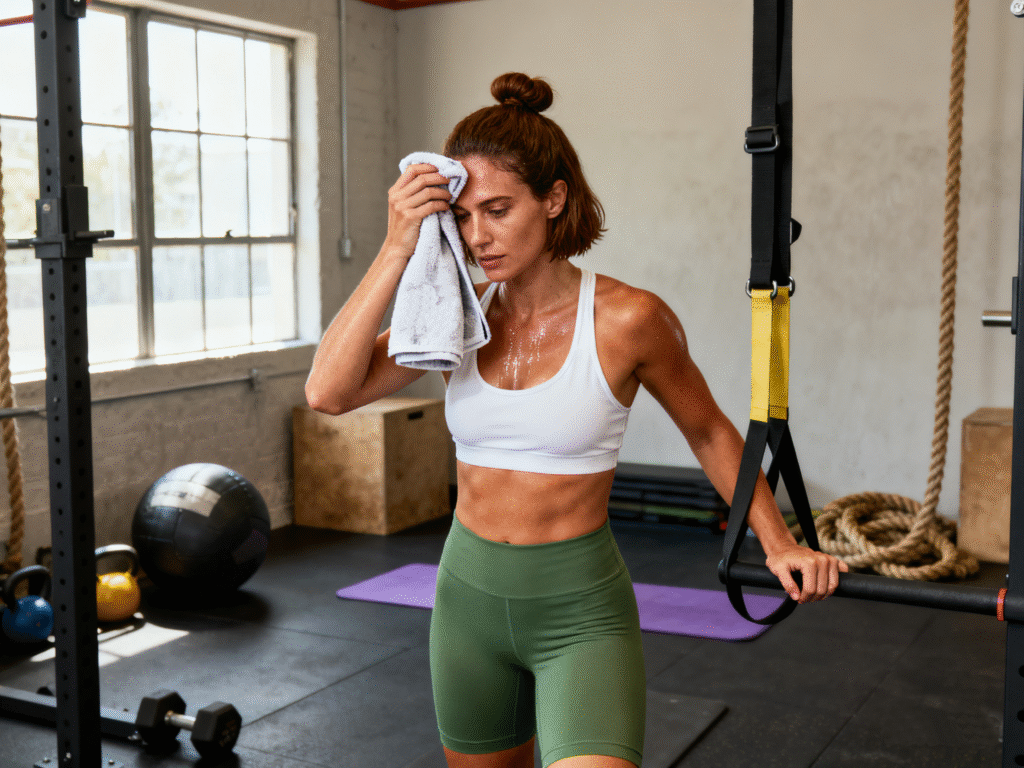
Myth — Microfiber Towels Shed Too Many Microplastics
Reality: Synthetic textiles do release microfibers during washing — this is a documented environmental concern. But it’s not a simple “microfiber = evil” story. Higher-quality, longer-lasting microfiber towels may reduce the total lifetime microfiber shed versus replacing cheap towels frequently. Policy and product design are working to reduce microfiber release.
Myth — Cotton Towels Are Always More Hygienic
Reality: Cotton absorbs and holds moisture longer, which can support microbial growth if the towel stays damp. Microfiber can dry faster and is excellent at removing residues; however, laundry and reuse practices determine hygiene more than material alone. Studies comparing microbial growth across materials show mixed results — proper care is the deciding factor.
Myth — Gym Wipes Can Replace Sweat Towels
Reality: Wipes are great for quick equipment cleanups, but they don’t replace the personal comfort and absorbency a towel provides. Use both: wipe machines; use your towel on yourself and as a mat/bench barrier.
Performance Testing & Buyer’s Benchmarks — How to Vet a Towel Like a Pro
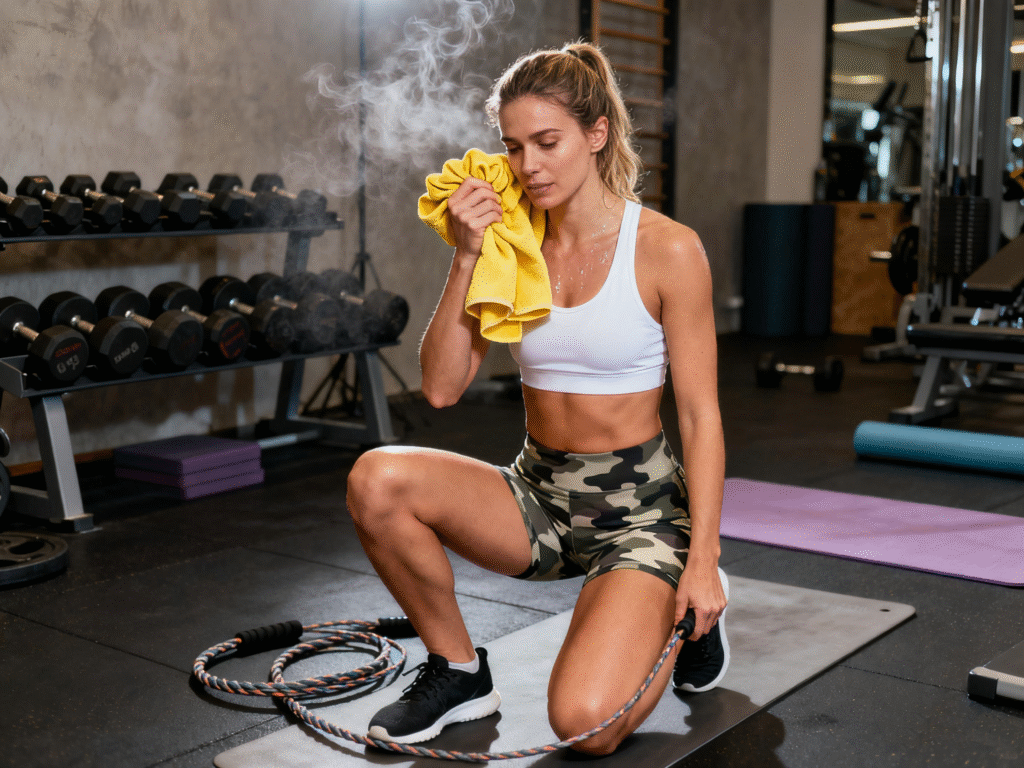
If you want to evaluate towels yourself (or demand data from suppliers), here’s a short lab-lite checklist you can run at home.
DIY Tests you can run in 5–30 minutes
- Absorbency test: Weigh a dry towel, fully submerge, squeeze uniformly into a container, then weigh again. Compute mL absorbed per gram of towel. (Microfiber often shows high absorbency per weight.)
- Drying-time test: Soak, wring to the same starting wetness, then place in a consistent drying condition (fan or open air) and time until fully dry.
- Packability test: Fold/roll towel into the smallest form and measure packed volume and weight — essential for travel/cycling.
- Durability check: Note stitching and fabric density; inspect after 10–20 washes for fraying.
- Odor challenge: Store a damp towel in a sealed bag for 24–48 hours (simulates a gym bag) and smell for persistent odors after laundering.
What to expect (practical benchmarks)
- Absorbency: multiple times towel weight (microfiber excels by weight).
- Drying: quick-dry towels should dry in a fraction of the time of plush cotton (climate-dependent).
- Durability: good towels survive dozens to hundreds of washes; check manufacturer claims.
Conclusion: Choosing and Using Sweat Towels the Right Way
A sweat towel is a small item with outsized returns: better hygiene, safer workouts, and fewer awkward conversations at the bench press. Choose the right material for how you train, wash after use, rotate smartly, and toss towels that have lost absorbency or smell despite proper care.
BCHTowel produces a range of quick-dry microfiber and plush cotton towels designed for gyms, studios, and everyday fitness — built for durability, comfort, and hygienic performance.
Frequently Asked Questions
You use it by wiping the swamp off your face and body before it drips onto the treadmill, yoga mat, or the poor soul next to you. Dab, don’t smear—unless you enjoy looking like you just lost a wrestling match with your own forehead.
They’re basically fabric superheroes: the fibers suck up sweat faster than your brain can say “cardio was a mistake.” Good ones are absorbent, quick-drying, and bacteria-resistant—so they soak, dry, and repeat without smelling like a locker room disaster.
Every. Single. Workout. No exceptions. A used sweat towel is basically a bacteria Airbnb—don’t offer free lodging. Toss it in the wash after each session unless you want your towel to develop its own zip code.
Bring one. (No one wants your DNA on the bench.)
Lay it down before sitting/lying on equipment.
Use it to wipe machines after you finish, not just your face.
Do not, under any circumstance, wring it out like a medieval sponge next to other humans.
Snapping “activates” it. The special fabric traps moisture, and when you snap it, it increases airflow and cooling evaporation. Translation: it feels like turning your neck into a personal air conditioner—without the electricity bill.
Depends on which towel trick you mean:
For skincare: Wrap damp warm towel → relax → feel spa-like → rinse.
For curls/waves (hair method): Wrap hair in towel twist → secure → let it set.
For workouts: Throw it around your neck like a Rocky montage prop and dab gracefully, not like you’re buffing a car.
